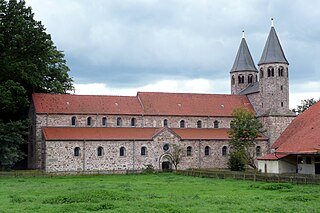
Bursfelde Abbey is a former Benedictine monastery located in Bursfelde, a hamlet which for administrative purposes is included in the municipality of nearby Hannoversch Münden in Lower Saxony, Germany. Today the abbey church and its estate cover a site of approximately 300 hectares which is administered by the Klosterkammer Hannover, a body that operates under the auspices of the Lower Saxony Ministry for Arts and the Sciences to look after reassigned or disused ecclesiastical buildings and other heritage properties in the region. The legal owner of the Bursfelde Monastery Complex is the Evangelical-Lutheran Church of Hanover.

Weltenburg Abbey is a Benedictine monastery in Weltenburg near Kelheim on the Danube in Bavaria, Germany.

Braunau in Rohr Abbey is a Benedictine monastery, formerly Rohr Abbey, a monastery of the Augustinian Canons, in Rohr in Niederbayern in the district of Kelheim in Bavaria, Germany.

Garsten Abbey is a former Benedictine monastery located in Garsten near Steyr in Upper Austria. Since 1851, the former monastery buildings have accommodated a prison.
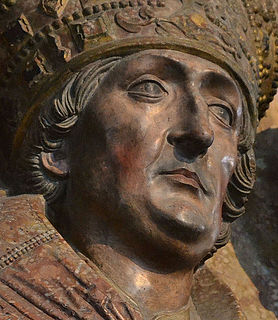
Lorenz von Bibra, Duke in Franconia was Prince-Bishop of the Bishopric of Würzburg from 1495 to 1519. His life paralleled that of Maximilian I (1459–1519), who ruled the Holy Roman Empire from 1493 to 1519, whom Lorenz served as an advisor.

The House of Bibra was one of the leading Uradel families in Franconia and present day Thuringia from the mid-15th century to about 1600. Later on the family rose from Reichsritter to Reichsfreiherr. After the Holy Roman Empire dissolved, they were made ‘’Freiherr’‘ (Barons) of Bavaria and Bohemia.

Kornelimünster Abbey, also known as Abbey of the Abbot Saint Benedict of Aniane and Pope Cornelius, is a Benedictine monastery that has been integrated since 1972. The abbey is located in Aachen in North Rhine-Westphalia in Germany.

Kloster Veßra is a municipality in the district of Hildburghausen in Thuringia, Germany.

Memleben Abbey was a Benedictine monastery in Memleben on the Unstrut river, today part of the Kaiserpfalz municipality in Saxony-Anhalt, Germany. The convent, now ruined, was established by Emperor Otto II and his consort Theophanu about 979.

Vessra Abbey was a Premonstratensian monastery in the village also named Kloster Veßra in the district of Hildburghausen, Thuringia, Germany.
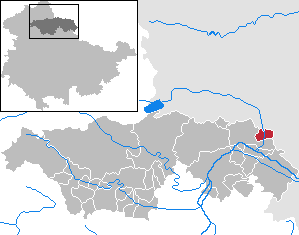
Mönchpfiffel-Nikolausrieth is a municipality on the river Helme in the district Kyffhäuserkreis, in Thuringia, Germany. The municipality was created in 1956 by the merging of the villages Monchpfiffel and Nikolausrieth.
Ebstorf Abbey is a Lutheran convent of nuns that is located near the Lower Saxon town of Uelzen, in Germany.

Lüne Abbey is a former Benedictine nunnery in the Lower Saxon town of Lüneburg. Today it is a Protestant Lutheran convent and is managed by the Klosterkammer Hannover. The current abbess is Reinhild Freifrau von der Goltz.

Drübeck Abbey is a former Benedictine monastery for nuns in Drübeck on the northern edge of the Harz in the German state of Saxony-Anhalt. Today it is a conference venue for the Evangelical Church of the Church Province of Saxony with an educational-theological institute and pastoral centre.

Fahr Convent, is a Benedictine convent located in the Swiss municipality of Unterengstringen in the canton of Zürich. Located in different cantons, Einsiedeln Abbey and Fahr Convent form a double monastery, overseen by the male Abbot of Einsiedeln, no converse arrangement appears to be available for the Abbess of Fahr. Fahr and Einsiedeln may be one of the last of such arrangements to survive.
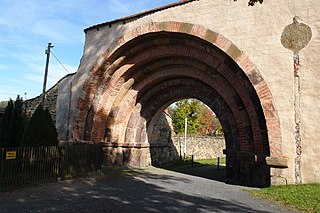
Altzella Abbey, also Altzelle Abbey, is a former Cistercian monastery near Nossen in Saxony, Germany. The former abbey contains the tombs of the Wettin margraves of Meissen from 1190 to 1381.
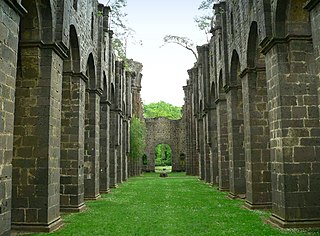
Arnsburg Abbey is a former Cistercian monastery near Lich in the Wetterau, Hesse, Germany. It was founded by monks from Eberbach Abbey in 1174. Although heavily damaged in the Thirty Years' War it was rebuilt later in the 17th century and prospered in the 18th century, when much of the abbey was rebuilt in Baroque style.

The Predigerkloster was a monastery of the Dominican Order, established around 1234 and abolished in 1524, in the imperial city of Zürich, Switzerland. Its church, the Predigerkirche, is one of the four main churches in Zürich, and was first built in 1231 as a Romanesque church of the then Dominican monastery. In the first half of the 14th century it was converted, the choir between 1308 and 1350 rebuilt, and a for that time unusually high bell tower built, regarded as the highest Gothic edifice in Zürich.

Kloster Allerheiligen is a former Benedictine monastery in the Swiss municipality of Schaffhausen in the Canton of Schaffhausen. The church Münster Allerheiligen is the oldest building in Schaffhausen, and houses also the Museum zu Allerheiligen.

Hornbach Abbey is a former monastery founded around 741 in the historic town of Gamundias by Saint Pirmin, which soon became a Benedictine abbey. The most important neighbouring abbeys were Bausendorf, Saint-Avold, Glandern, Villers-Bettnach, Fraulautern, Mettlach, Tholey, and the stift of St. Arnual. The neighboring spiritual centers were Trier and Metz. At present, all that remains of Hornbach Abbey are the structural remains of the convent buildings, which have been supplemented by a monastery museum, and a modern chapel with the historical tomb of the monastery's founder.






















